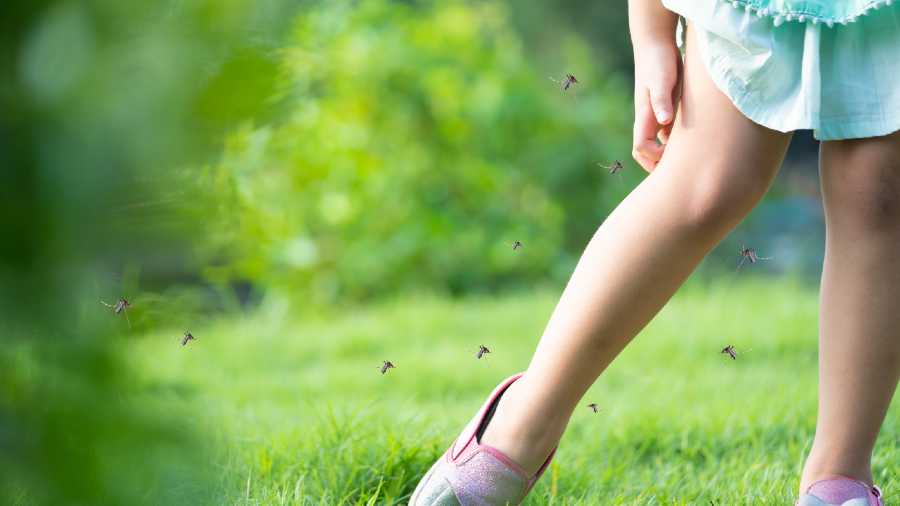The monsoon is now active all across India. But with the rains come other problems, particularly the mosquito menace and dengue — a transmittable disease caused by the dengue virus. As there are four subtypes of this virus, a person can contract the disease up to four times.
Dengue is transmitted by the Aedes mosquito, an attractive insect white bands on the legs and lyre-like markings on the thorax. The female attacks humans as she needs a blood meal to reproduce (males are vegetarian). If a mosquito bites someone with dengue, the virus lives in the mosquito’s salivary gland and is injected into the next person the insect bites.
A unique feature of the Aedes mosquito is that it is a daytime feeder. It also loves humans and lives in their homes — under beds and in curtain folds and furniture. Once it bites, it looks for water to lay its eggs. Stagnant water is often freely available near garbage bins, in containers, flower vases and even bottle caps. The mosquito lays its eggs in rainwater outside the house too, in discarded tyres and flower pots. Even if the water dries up, the eggs remain viable for months, hatching as and when they come in contact with water.
Dengue affects mainly children and young adults. There is an asymptomatic incubation period of 4-7 days, following which the person becomes ill. The temperature is high (40°C or 104°F). There is no cough or sore throat, but there is severe muscle and joint pain with headache, nausea and vomiting. The typical dengue headache is pain behind the eyes. The lymph nodes may be swollen. There may be red rashes all over the body.
Blood tests can confirm the disease in the first few days of the infection. Several tests are available and they are accurate. Antibodies may remain in the blood for months after recovery.
Second attacks of dengue are more serious. Severe reactions can occur, with bleeding and plasma leakage. The platelet counts can drop. There may be abdominal pain, vomiting, loss of consciousness or multiple organ failure. It can be fatal.
Unfortunately, there is no treatment. The symptoms can be treated with 500mg paracetamol every 4-6 hours in adults and 10mg to 15mg/kg per dose in children. Severe dengue patients may even need IV fluids, plasma or platelet transfusions.
Vaccination is available. It is called CyD-TDV (chimeric yellow fever dengue-tetravalent dengue vaccine) — brand name is Dengvaxia. It is recommended from the age of nine to 90 for previously infected people. Three doses are required six months apart.
To tackle mosquitoes:
Make sure water in drains is free-flowing. Stagnant water should be drained off. This means checking your immediate environment for old tyres, bottle caps and even leaves.
Stock tanks and ponds with small larva-eating fish such as guppies — Gambusia, Lebister).
Pour a little kerosene or oil on stagnant water so that it creates a thin film on the entire surface — this will prevent the larvae from being able to breathe.
Put up mosquito-proofing plastic or metal nets on windows and ventilators. Leaving doors open at dawn and dusk is like extending an invitation to mosquitoes.
Use mosquito nets when sleeping.
Insecticide sprays, mats and coils can be used to drive away mosquitoes. Unfortunately, they are toxic to humans too and some people are allergic to them.
Apply mosquito repellents on clothing (not skin). This can be effective for a few hours. Many of these contain lemongrass or neem oil. Patches called mosquito tattoos containing pure citronella extract can also be placed on clothing.
Electronic mosquito repellent machines can be used.
The best way to control dengue is to prevent getting bitten by mosquitoes.
The writer is a paediatrician with a family practice at Vellore and the author of Staying Healthy in Modern India. If you have any questions on health issues, please write to yourhealthgm@yahoo.co.in











